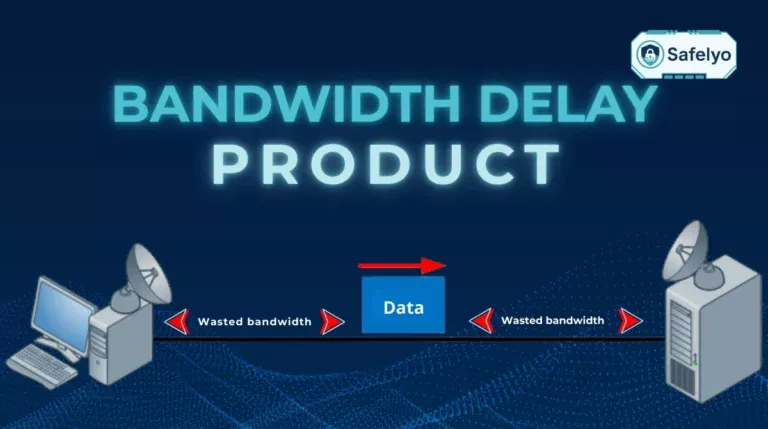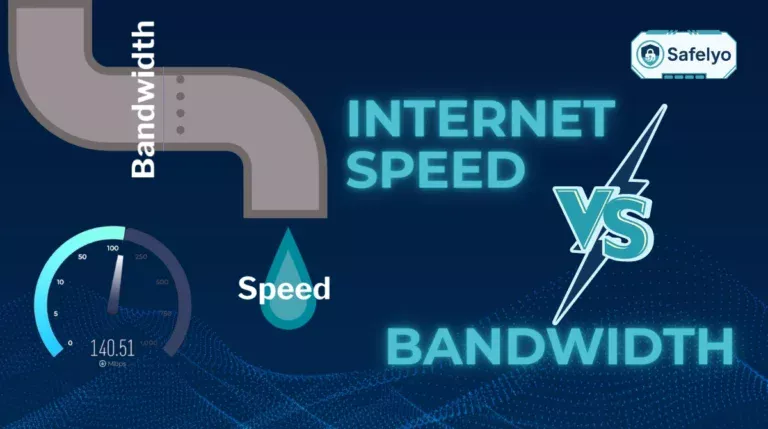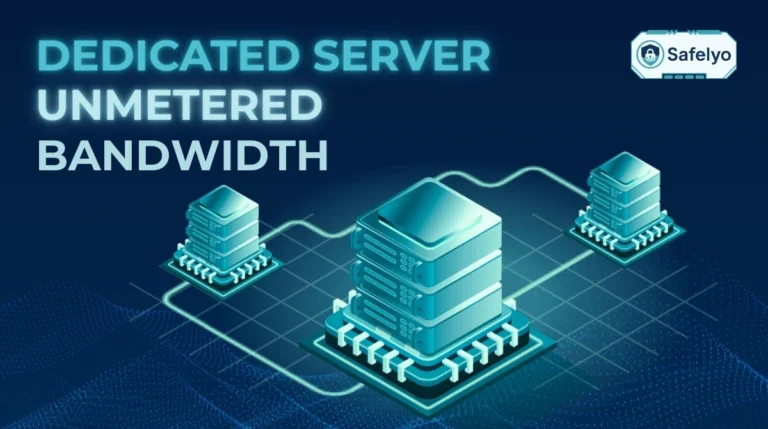Choosing an internet plan feels like a guessing game. Go too low, and you’re stuck with endless buffering during movie night. Go too high, and you’re overpaying every single month for speed you’ll never use.
In a world where our homes are now also our offices, classrooms, and movie theaters, the answer to “how much internet bandwidth do I need?” isn’t just a technical question – it’s essential for a frustration-free digital life. The right speed ensures smooth video calls, lag-free gaming, and crisp 4K streaming for everyone in your household.
As a tech analyst who helps people troubleshoot their home networks, I’ve seen the same story repeat: Families paying for gigabit speeds they can’t use, or others struggling with a slow connection that a simple, informed choice could have fixed. This isn’t about finding the biggest number; it’s about finding the right number for your unique needs.
In this comprehensive guide, you’ll discover:
- How to think about your bandwidth like a family budget.
- A simple calculator to get a personalized speed recommendation.
- The real-world bandwidth requirements for streaming, gaming, and working from home.
- How to accurately test your speed and ensure you’re getting what you pay for.
Stop guessing about one of your most important monthly bills. Let me guide you to the perfect internet speed and help you stop overpaying for good.
1. Thinking about your bandwidth needs
Before we dive into the numbers, let’s reframe the question. I’ve found that the best way to think about how many Mbps I need is to stop thinking about technology and start thinking about creating a monthly budget for your family.
1.1. Your bandwidth plan
The internet plan you buy from your provider (e.g., 300 Mbps) is your total monthly “income.” It’s the maximum resource you have available to “spend” at any given moment. This is your total data capacity.
1.2. Your devices and activities
Every single device and online activity on your network “spends” a portion of that income.
- Streaming a 4K movie on your smart TV is a “major expense” that requires a large chunk of your budget.
- Someone playing an online game is another significant but manageable expense.
- Checking email or scrolling through social media on your phone is a “small purchase.”
1.3. The problem
You run into problems when your household’s “spending” exceeds your “income.” If everyone in the family tries to make a major purchase at the same time – one person is streaming a 4K movie, another is on a Zoom call for work, and a third is downloading a new game – you can “overdraw” your bandwidth account.
The result? The bank (your router) panics, and everyone’s transaction (data stream) slows down to a crawl. You experience buffering, frozen video calls, and intense gaming lag.
Your goal is to choose an “income” level (an internet plan) that comfortably covers your family’s peak “spending” habits, with a little left over for unexpected costs.
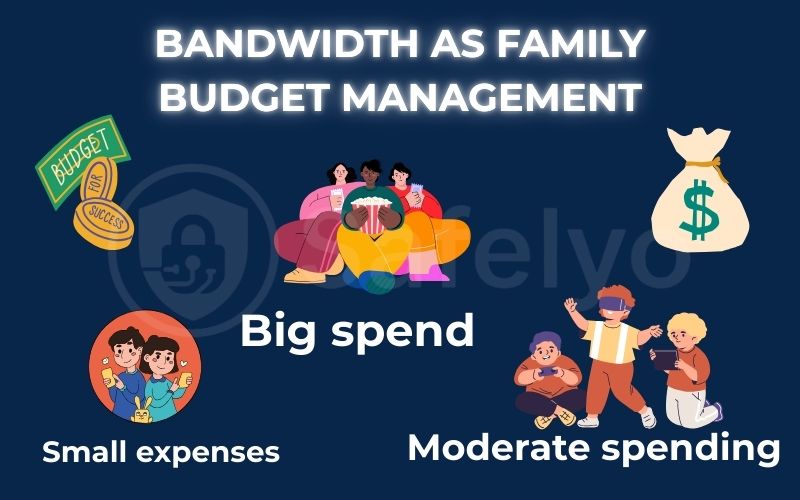
2. Bandwidth needs cheat sheet: A quick reference guide
Our calculator gives you a great overall recommendation, but it’s also helpful to understand the “expenses” of each online activity. What is a good internet speed? It’s one that comfortably covers the cost of everything you want to do online.
I’ve put together this quick cheat sheet based on recommendations from major streaming services like Netflix and my own real-world testing. This table shows the typical bandwidth “cost” for common activities.
| Activity | Minimum Speed (Just to work) | Recommended Speed (For a smooth, buffer-free experience) |
| Web Browsing & Email | 1-5 Mbps | 25 Mbps |
| HD Streaming (1080p) | 5-8 Mbps | 25-50 Mbps |
| 4K Streaming (UHD) | 25 Mbps (This is Netflix’s official recommendation) | 50-100 Mbps (Provides a buffer for other devices) |
| Online Gaming | 3-6 Mbps | 25-50 Mbps (Low latency, or ‘ping’, is actually more important here) |
| Video Calls (Zoom/Teams) | 1-4 Mbps (Up & Down) | 10-25 Mbps (Especially a good upload speed) |
| Working From Home | 10-25 Mbps | 50+ Mbps (Essential if you handle large files or frequent video calls) |
As you can see, a single activity doesn’t require a massive amount of speed. The real question is how many of these “expenses” are happening at the same time in your home. That’s why a family of four often needs a plan in the 300-500 Mbps range to ensure that even during peak hours, the “internet budget” is never overdrawn.
3. Don’t forget upload speed: The secret to great video calls
When you shop for an internet plan, providers blast their download speed in big, bold numbers. 300 Mbps! 500 Mbps! 1 Gig! But they often hide the upload speed in the fine print.
From my experience helping people troubleshoot their “work from home” network issues, I can tell you this: For many modern activities, your upload vs download speed matters immensely. A slow upload speed is often the secret villain behind your most frustrating connection problems.
Why upload speed matters
Think of download speed as how fast you can receive information, and upload speed as how fast you can send it.
- Video Conferencing: When you’re on a Zoom or Teams call, you are constantly uploading your video stream to the other participants. A low upload speed is the number one cause of a frozen, pixelated video of you. If people are constantly saying, “You’ve frozen again,” your upload speed is almost certainly the culprit.
- Working From Home: Uploading large files to cloud storage (like OneDrive or Google Drive), sending big email attachments, and backing up your computer to a service like Backblaze are all entirely dependent on your upload speed.
- Content Creation & Gaming: If you stream on Twitch, upload videos to YouTube, or even just want your voice chat in a game to be crystal clear, a high upload speed is non-negotiable.
The Bottom Line: What to Look For
When you’re comparing plans, don’t just look at the big number. Find the upload speed.
- For most households, an upload speed of at least 10-20 Mbps is a good target.
- If you work from home with frequent video calls or are a content creator, look for “symmetrical” fiber plans. These are plans where the upload and download speeds are the same (e.g., “300 / 300 Mbps”). A symmetrical connection is the gold standard for a modern, two-way internet experience.
4. How your VPN and bandwidth work together
A VPN is an essential tool for protecting your online privacy. But as a security analyst, I always advise users to understand their relationship with their internet bandwidth. Choosing the right internet plan is even more important when you’re a regular VPN user.
Here’s the simple truth: A VPN encrypts your data, and this process adds a small amount of “overhead.” This means a VPN will always reduce your maximum internet speed slightly. In my extensive testing, a top-tier VPN will typically reduce speeds by about 10-20% under ideal conditions.
The problem with low bandwidth
This is where your starting bandwidth becomes critical.
- If you have a high-bandwidth plan (e.g., 300 Mbps), a 20% speed reduction from your VPN is barely noticeable. You’ll still have a whopping 240 Mbps, which is more than enough for anything.
- However, if you start with a slow internet plan (e.g., 25 Mbps), a 20% speed reduction drops you to just 20 Mbps. This can be the difference between a smooth 4K stream and a buffering nightmare. The margin for error is much smaller.
The solution: Budget for security
When you’re choosing an internet plan, and you know you’ll be using a VPN regularly to protect your privacy, it’s wise to choose a plan with a little extra headroom.
This is why our calculator has a built-in VPN buffer. If your calculated need is around 100 Mbps, I strongly recommend opting for a 150 Mbps or 200 Mbps plan if available. This extra bandwidth ensures that you have a fast and seamless experience, with or without your VPN active. Think of it as investing in a slightly larger “income” to comfortably cover the small but essential “expense” of digital security.
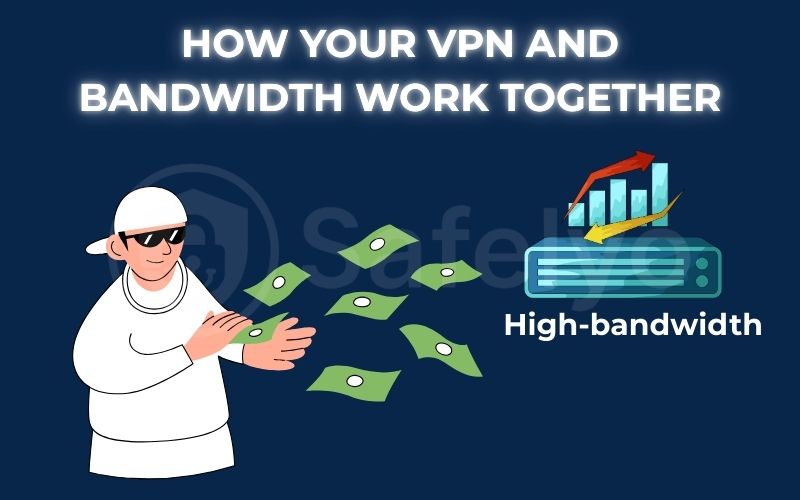
5. How to test your internet speed accurately
So, you’ve chosen a plan, but are you actually getting the speed you’re paying for? Before you call your ISP to complain, it’s essential to know how to test your internet speed accurately. Running a quick test from your phone while standing in the kitchen won’t give you a true picture of your connection’s health.
As a tech analyst, getting a clean, reliable baseline is the first step in any diagnostic process. Follow this simple checklist for the most accurate results.
YOUR 5-STEP ACCURACY CHECKLIST
1. Use a trusted tool:
Don’t just use the first result on Google. Stick to the industry standards: Speedtest.net by Ookla is the most widely recognized, and Fast.com (powered by Netflix) is excellent for specifically testing your streaming performance.
2. Go wired:
This is the single most important step. Connect your computer directly to your router with an Ethernet cable. Testing over Wi-Fi will always be slower due to signal interference and distance. A wired test is the only way to measure the true speed coming into your home.
3. Close everything:
Shut down all other applications, browser tabs, and especially any background processes that might be using the internet (like cloud backups or game launchers). Disconnect other devices from the network if possible to ensure your test computer has 100% of the connection to itself.
4. Test at different times:
Your internet speed can fluctuate. I recommend running tests during both peak hours (like 8 PM on a weeknight when everyone is streaming) and off-peak hours (like 8 AM). This will show you how your connection performs under neighborhood load.
5. Compare to your plan:
Finally, look at your wired test results. If they are consistently 80-95% of the speed you’re paying for, your connection is in great shape. If your wired tests are consistently much lower (e.g., you pay for 300 Mbps but never get more than 90 Mbps), you now have reliable data to take to your ISP and ask them to investigate.
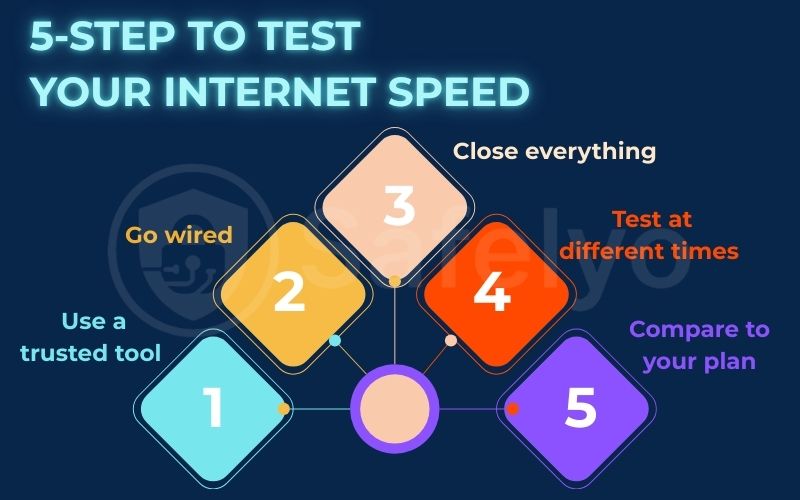
6. FAQ about how much internet bandwidth do I need
Choosing the right plan can feel complicated. Here are some quick, direct answers to the most common questions people ask when trying to determine their internet needs.
How do I determine how much bandwidth I need?
The best way is to use our bandwidth calculator above. It provides a personalized recommendation by considering the number of users and devices in your home, as well as your primary online activities (streaming, gaming, etc.). Alternatively, use our “cheat sheet” to add up the needs of all activities that might happen simultaneously.
What is a good bandwidth for home internet?
A good bandwidth for most homes is between 300 and 500 Mbps. This provides more than enough capacity for a family to stream in 4K, play online games, participate in video calls, and browse the web simultaneously without experiencing slowdowns or buffering.
Do I need 200 Mbps or 400 Mbps?
If you are a household of 3-5 people with multiple devices often streaming, gaming, or working from home at the same time, 400 Mbps is a safer choice to ensure a smooth experience for everyone. If you are a smaller household of 1-3 people with more moderate usage (HD streaming, general browsing), 200 Mbps is likely more than enough.
Is 100 Mbps fast enough?
For most households of 2-4 people, is 100 Mbps fast enough? Yes. It can comfortably handle multiple HD streams, some online gaming, and general browsing. You may experience some buffering if multiple people are trying to stream in 4K at the same time.
Is 150Mbps enough for 2 people?
Yes, 150 Mbps is an excellent speed for 2 people. It provides ample bandwidth for both individuals to stream in 4K, participate in high-quality video calls, and browse the web simultaneously without any performance issues.
What’s the difference between bandwidth and speed?
Simply put, bandwidth is the maximum capacity of your connection (the width of a highway), while what people call “speed” is more accurately throughput – how fast data is actually moving at any given moment (the speed of the cars in current traffic).
Does a VPN use a lot of bandwidth?
The VPN itself uses very little extra data (a small encryption overhead). Your main bandwidth consumption comes from the activity you’re doing (like streaming), not from the VPN. However, because a VPN encrypts your connection, it’s wise to choose an internet plan with 15-20% extra bandwidth to ensure a fast experience.
Why is my gigabit (1,000 Mbps) internet not that fast?
Your “highway” is massive, but you may be limited by other factors. Common bottlenecks include using a slow Wi-Fi connection instead of a wired one, an old router that can’t handle those speeds, or connecting to a server on the other side of the world that simply can’t send you data that fast.
7. Conclusion
Determining how much internet bandwidth you need is no longer a mystery. By moving past the marketing hype and thinking of it like a simple budget based on your household’s unique digital habits, you can make a smart, informed decision.
- Think of bandwidth as your internet budget; choose a plan that comfortably covers your peak “spending.”
- Use our calculator for a personalized recommendation that even accounts for VPN usage.
- Don’t forget upload speed, especially if you work from home or create content.
- Test your speed accurately (with a wired connection) to ensure you’re getting what you pay for.
Stop overpaying for speed you don’t need or suffering with a plan that’s too slow. By making an informed choice, you can get the perfect balance of performance and value for your home.
A fast internet connection is the first step. The next step is securing it. Explore the comprehensive reviews of the best VPNs in our Privacy & Security Basics section from Safelyo to protect your entire home network.


